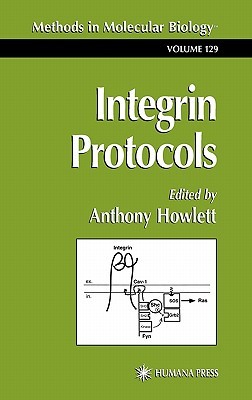
- We will send in 10–14 business days.
- Publisher: Humana
- ISBN-10: 0896035697
- ISBN-13: 9780896035690
- Format: 16.3 x 23.7 x 2.6 cm, hardcover
- Language: English
- SAVE -10% with code: EXTRA
Integrin Protocols (e-book) (used book) | bookbook.eu
Reviews
Description
It is now widely accepted that the extracellular matrix (ECM) is a key determinant of tissue-specific gene expression. Signals provided by ECM are transduced by integrins, a large and growing superfamily of transmembrane heterodimeric cell surface receptors that link the ECM to structural and fu- tional elements within the cell. A wide range of cellular phenotypes have been shown to be regulated by integrins, including growth, differentiation, mig- tion, invasion, angiogenesis, and apoptosis. Furthermore, abnormalities of integrin expression and function have been implicated in the etiology of va- ous pathologic conditions, including cardiovascular disease, inflammatory disorders, and cancer. Thus integrins have emerged as an important class of molecules with wide ranging implications for understanding basic biological processes. In Integrin Protocols we provide a wide-ranging collection of laboratory protocols intended to assist investigators interested in integrins in working productively with these molecules, in studying their expression, and in pot- tially manipulating that expression to define their role(s) in relevant biolo- cal models. Protocols are provided for the analysis of integrin expression both at the RNA and protein levels (Chaps. 2, 5, and 7). Delcommenne and Streuli describe procedures for making rat monoclonal antibodies specific for mouse integrins; Schneller et al. and Arap and Huang describe methods for western blotting of integrins and RT-PCR analysis. Protocols are included that cover the analysis of the functional properties of integrins (Chaps. 1, 3, 4, 8, and 9 through 11). Koivunen et al.
EXTRA 10 % discount with code: EXTRA
The promotion ends in 19d.14:35:45
The discount code is valid when purchasing from 10 €. Discounts do not stack.
- Publisher: Humana
- ISBN-10: 0896035697
- ISBN-13: 9780896035690
- Format: 16.3 x 23.7 x 2.6 cm, hardcover
- Language: English English
It is now widely accepted that the extracellular matrix (ECM) is a key determinant of tissue-specific gene expression. Signals provided by ECM are transduced by integrins, a large and growing superfamily of transmembrane heterodimeric cell surface receptors that link the ECM to structural and fu- tional elements within the cell. A wide range of cellular phenotypes have been shown to be regulated by integrins, including growth, differentiation, mig- tion, invasion, angiogenesis, and apoptosis. Furthermore, abnormalities of integrin expression and function have been implicated in the etiology of va- ous pathologic conditions, including cardiovascular disease, inflammatory disorders, and cancer. Thus integrins have emerged as an important class of molecules with wide ranging implications for understanding basic biological processes. In Integrin Protocols we provide a wide-ranging collection of laboratory protocols intended to assist investigators interested in integrins in working productively with these molecules, in studying their expression, and in pot- tially manipulating that expression to define their role(s) in relevant biolo- cal models. Protocols are provided for the analysis of integrin expression both at the RNA and protein levels (Chaps. 2, 5, and 7). Delcommenne and Streuli describe procedures for making rat monoclonal antibodies specific for mouse integrins; Schneller et al. and Arap and Huang describe methods for western blotting of integrins and RT-PCR analysis. Protocols are included that cover the analysis of the functional properties of integrins (Chaps. 1, 3, 4, 8, and 9 through 11). Koivunen et al.


Reviews